OB HESI PRACTICE TEST 2 (RATED A+) Latest Questions and Complete Solutions
Document Content and Description Below
OB HESI PRACTICE TEST 2 (A Graded) Latest Questions and Complete Solutions 1. While breastfeeding, a new mother strokes the top of her baby's head and asks the nurse about the baby's swollen scalp. Th... e nurse responds that the swelling is caput succedaneum. Which additional information should the nurse provide this new mother? A) The infant should be positioned to reduce the swelling. Feedback: INCORRECT B) The swelling is a subperiosteal collection of blood. Feedback: INCORRECT C) The pediatrician will aspirate the blood if it gets larger. Feedback: INCORRECT D) The scalp edema will subside in a few days after birth. Feedback: CORRECT Feedback: Caput succedaneum is edema of the fetal scalp that crosses over the suture lines and is caused by pressure on the fetal head against the cervix during labor; it subside in a few days after birth without treatment. Cephalohematoma, a subperiosteal collection of blood that does not cross the suture lines and is a common benign birth injury. 2. A client at 30-weeks gestation, complaining of pressure over the pubic area, is admitted for observation. She is contracting irregularly and demonstrates underlying uterine irritability. Vaginal examination reveals that her cervix is closed, thick, and high. Based on these data, which intervention should the nurse implement first? A) Provide oral hydration. Feedback: INCORRECT B) Have a complete blood count (CBC) drawn. Feedback: INCORRECT C) Obtain a specimen for urine analysis. Feedback: CORRECT D) Place the client on strict bedrest. Feedback: INCORRECT Feedback: Obtaining a urine analysis (C) should be done first because preterm clients with uterine irritability and contractions are often suffering from a urinary tract infection, and this should be ruled out first. 3. A newborn, whose mother is HIV positive, is scheduled for follow-up assessments. The nurse knows that the most likely presenting symptom for a pediatric client with AIDS is: A) Shortness of breath. Feedback: INCORRECT B) Joint pain. Feedback: INCORRECT C) A persistent cold. Feedback: CORRECT D) organomegaly. Feedback: INCORRECT Feedback: Respiratory tract infections commonly occur in the pediatric population. However, the child with AIDS has a decreased ability to defend the body against these infections and often the presenting symptom of a child with AIDS is a persistent cold (C). 4. A client who has an autosomal dominant inherited disorder is exploring family planning options and the risk of transmission of the disorder to an infant. The nurse's response should be based on what information? A) Males inherit the disorder with a greater frequency than females. Feedback: INCORRECT B) Each pregnancy carries a 50% chance of inheriting the disorder. Feedback: CORRECT C) The disorder occurs in 25% of pregnancies. Feedback: INCORRECT D) All children will be carriers of the disorder. Feedback: INCORRECT Feedback: According to the laws of inheritance, an autosomal dominant disorder has a 50% chance of being transmitted with each pregnancy (B), and if transmitted, the disorder will appear in the child. 5. Which maternal behavior is the nurse most likely to see when a new mother receives her infant for the first time? A) She eagerly reaches for the infant, undresses the infant, and examines the infant completely. Feedback: INCORRECT B) Her arms and hands receive the infant and she then traces the infant's profile with her fingertips. Feedback: CORRECT C) Her arms and hands receive the infant and she then cuddles the infant to her own body. Feedback: INCORRECT D) She eagerly reaches for the infant and then holds the infant close to her own body. Feedback: INCORRECT Feedback: Attachment/bonding theory indicates that most mothers will demonstrate behaviors described in (B) during the first visit with the newborn, which may be at delivery or later. After the first visit, the mother may exhibit greater affection such as eagerly reaching, hugging, etc. (A, C, and D). [Show More]
Last updated: 1 year ago
Preview 1 out of 55 pages
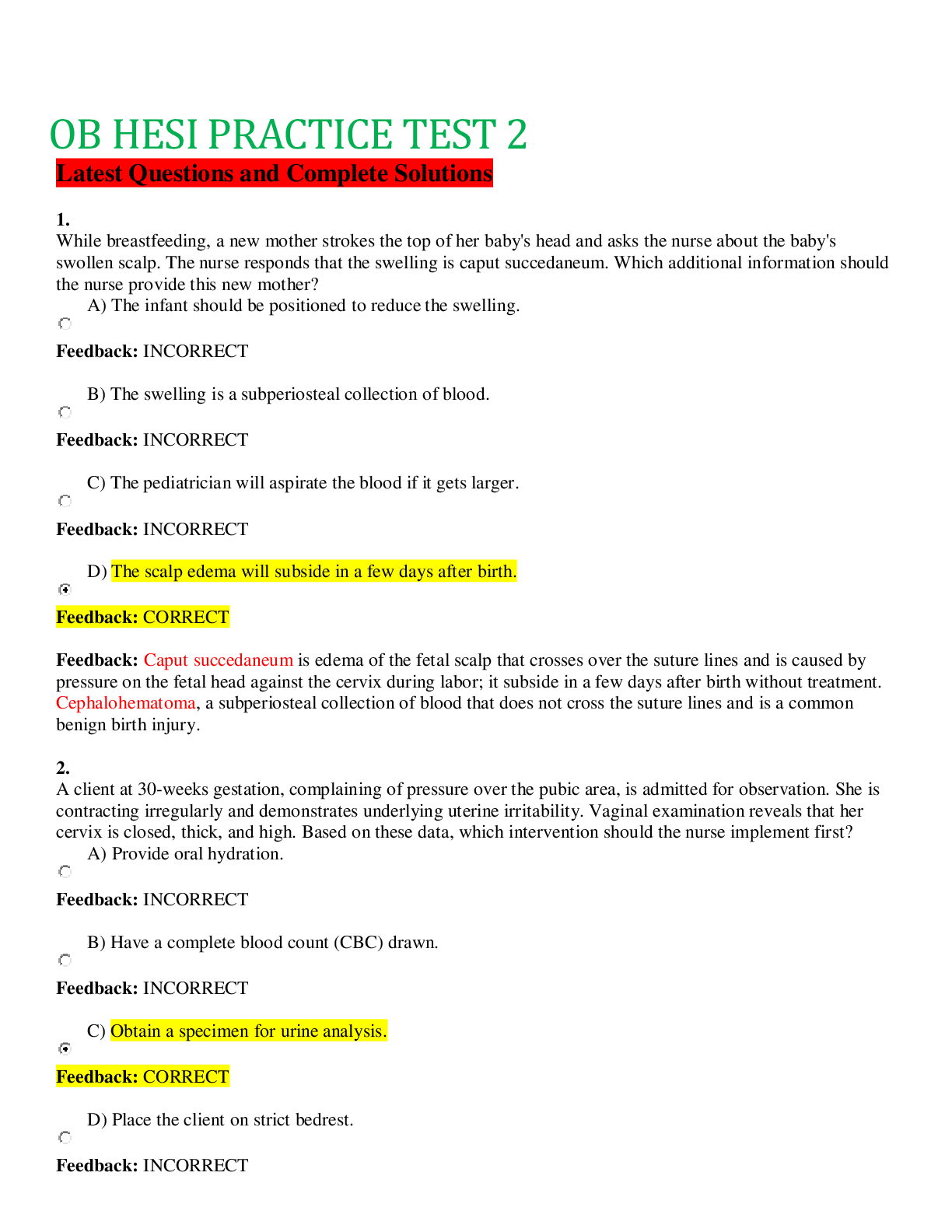
Reviews( 0 )
Document information
Connected school, study & course
About the document
Uploaded On
Jun 07, 2021
Number of pages
55
Written in
Additional information
This document has been written for:
Uploaded
Jun 07, 2021
Downloads
0
Views
44


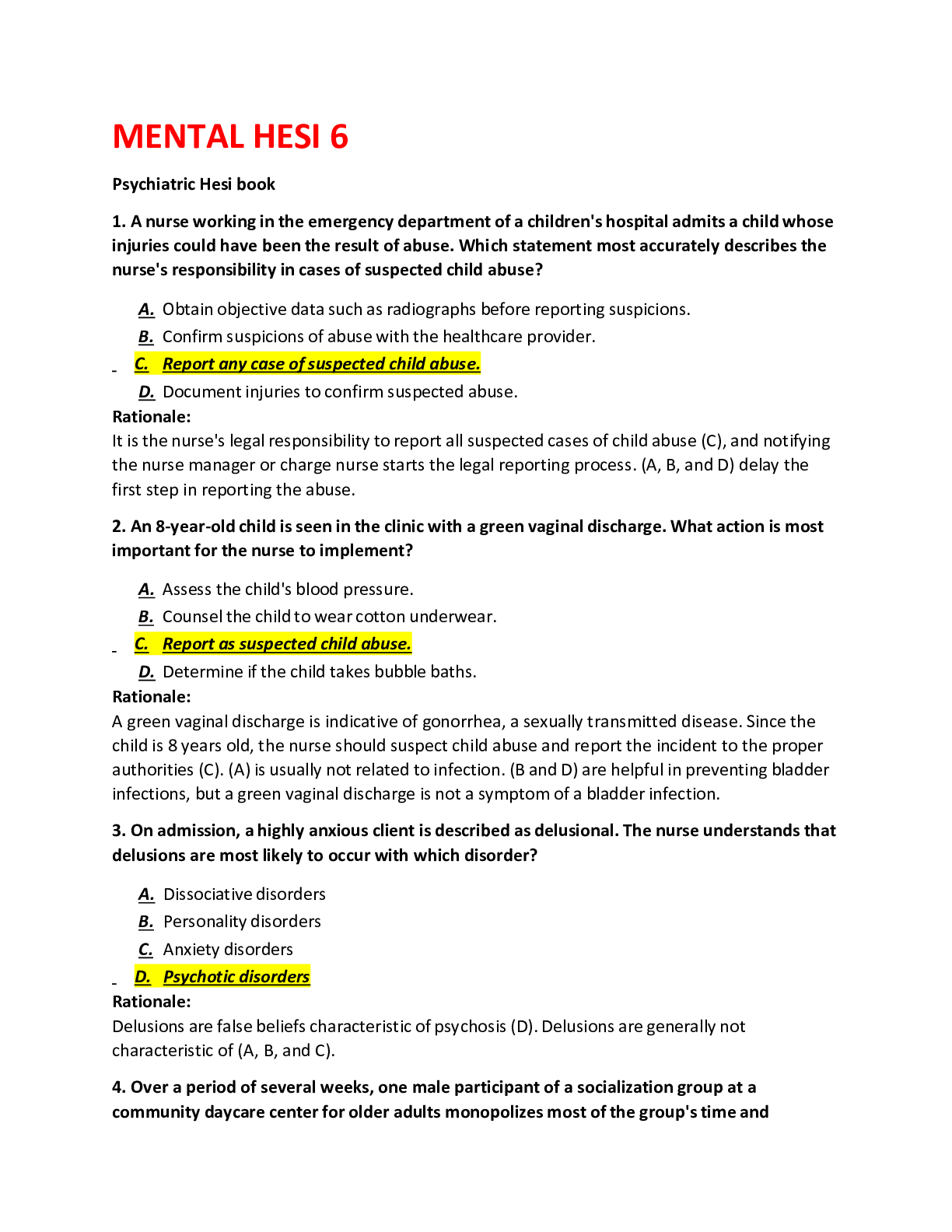
.png)
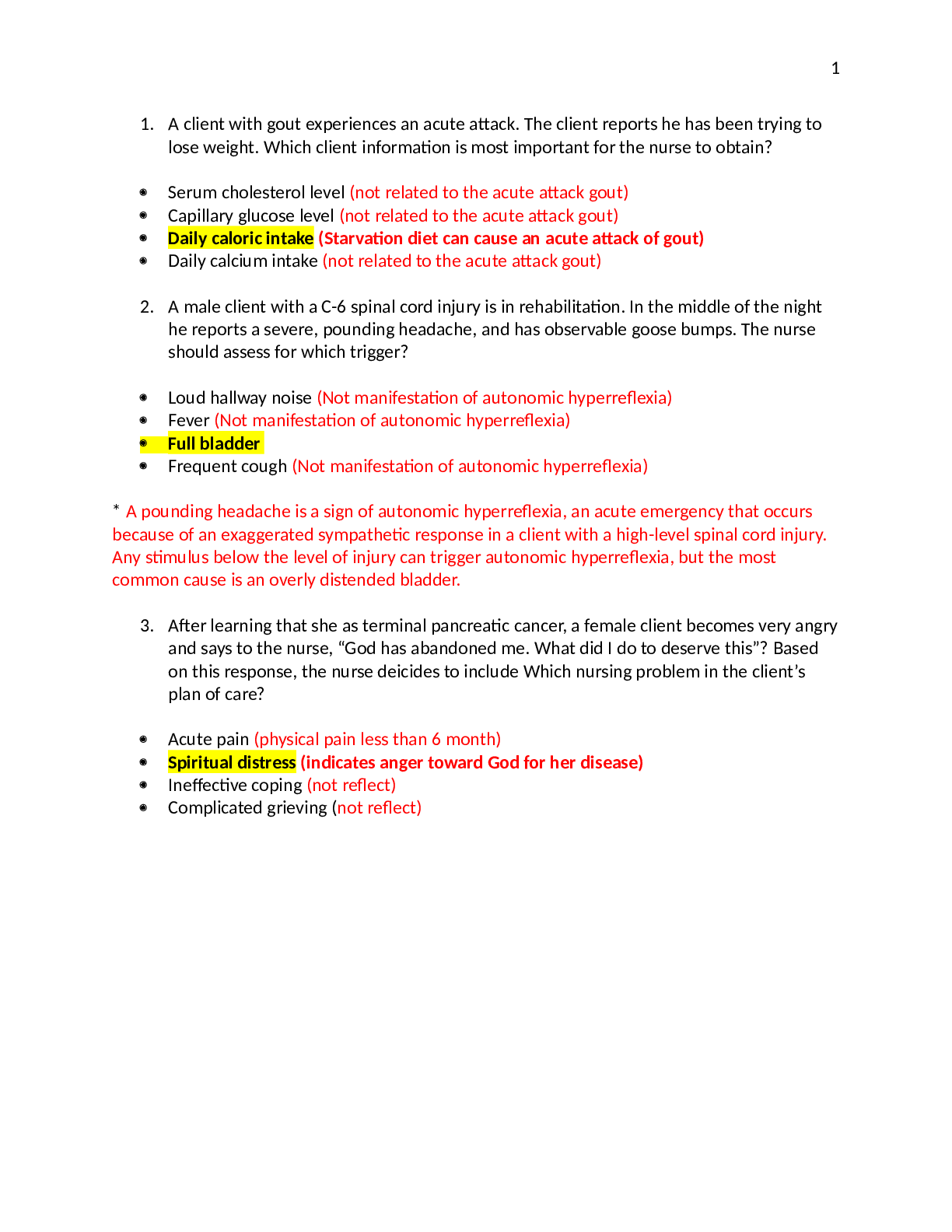
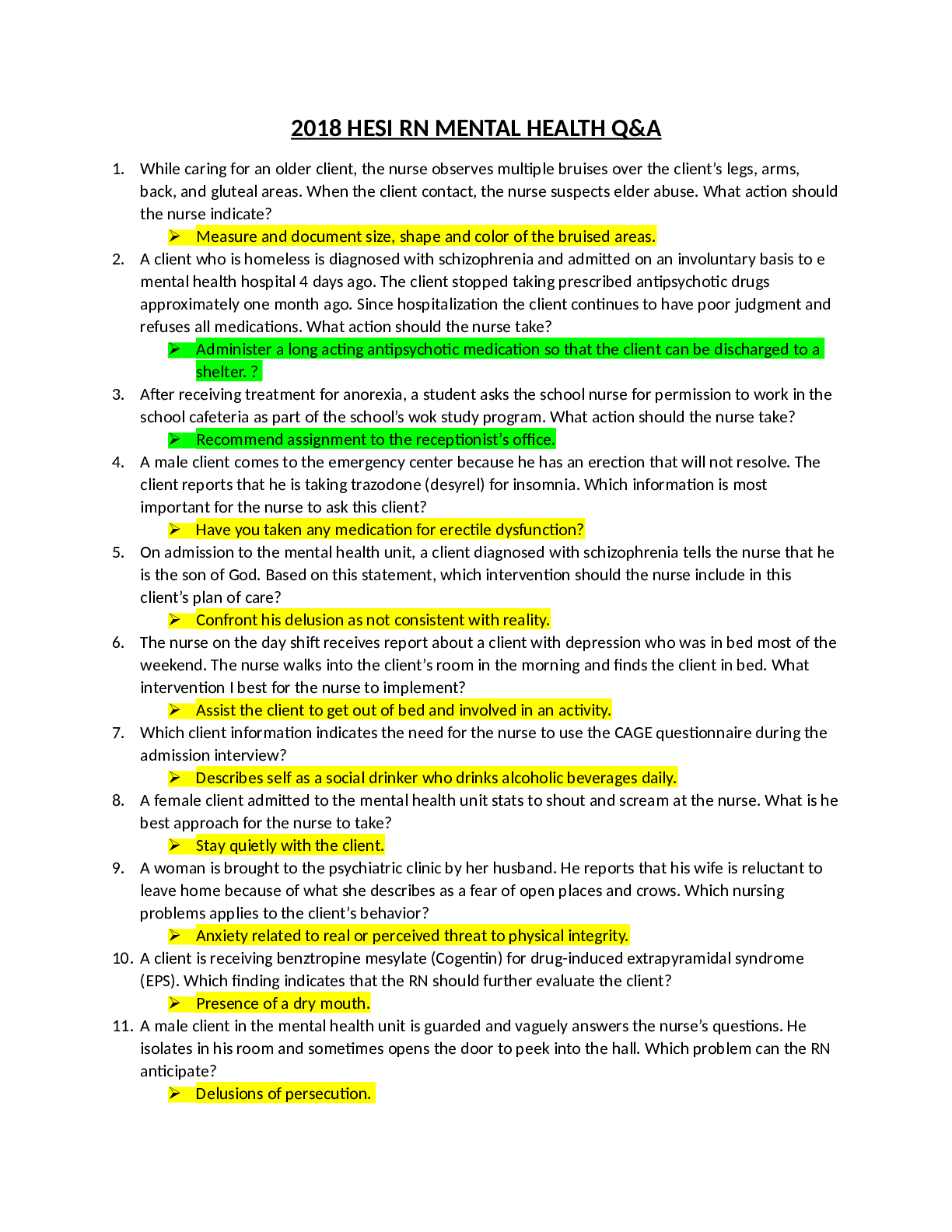
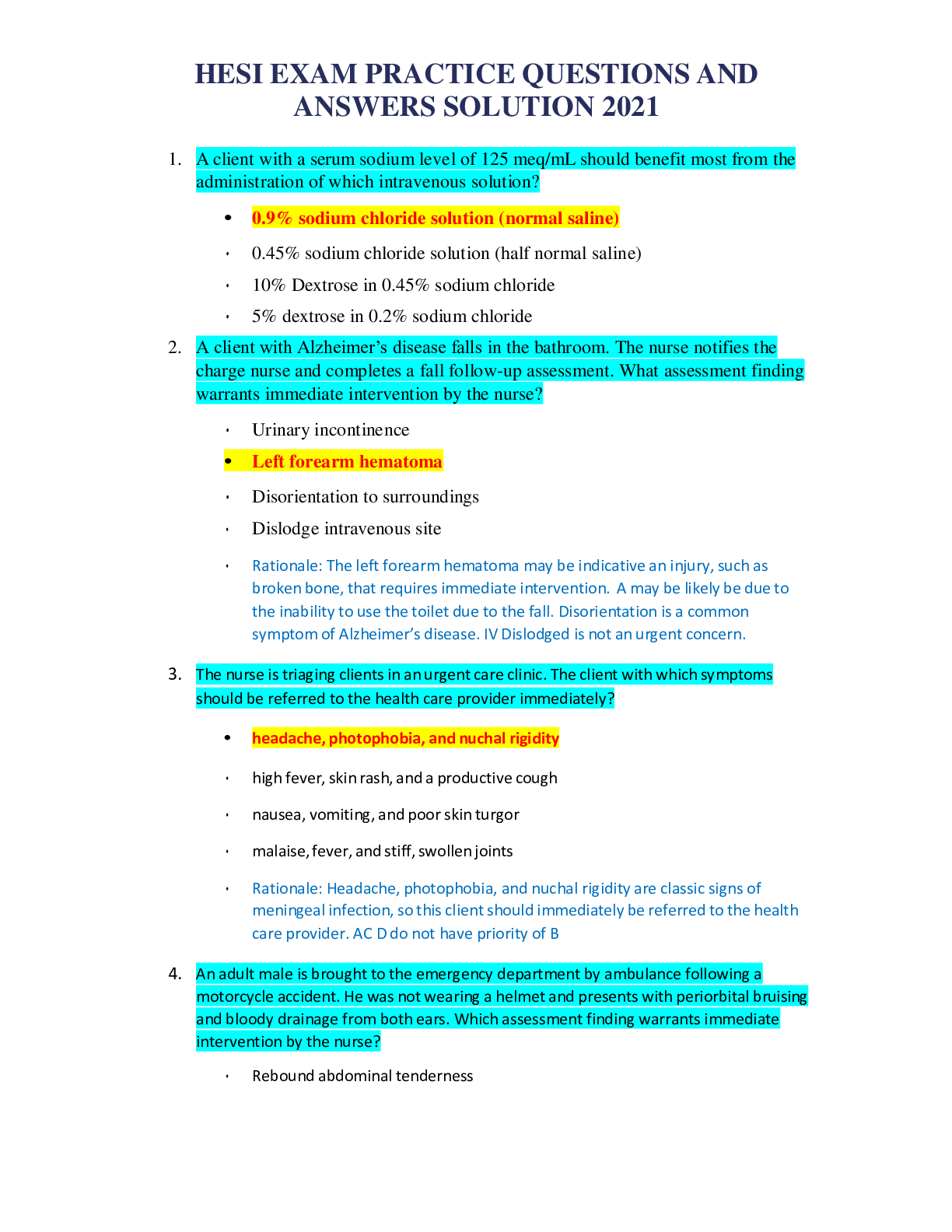
.png)

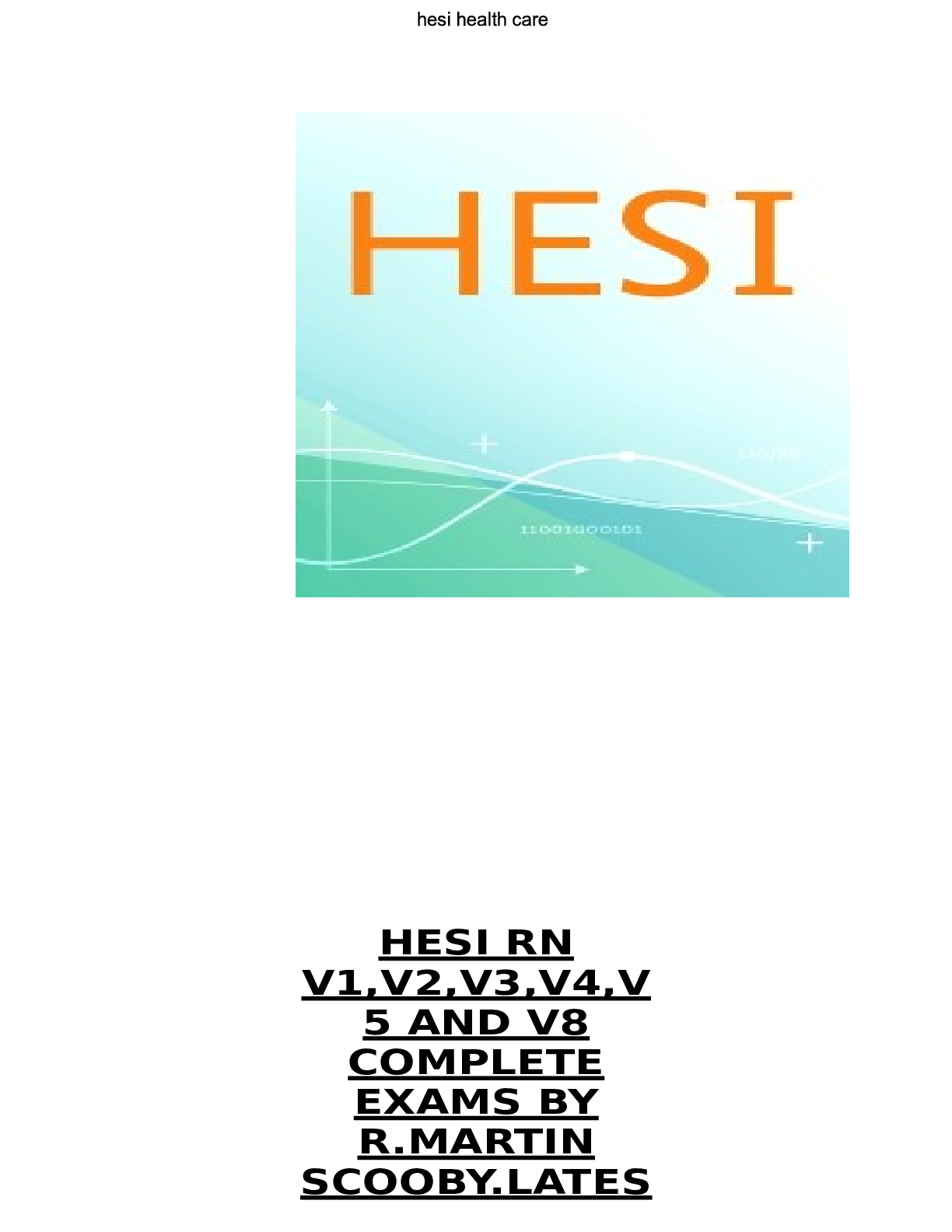
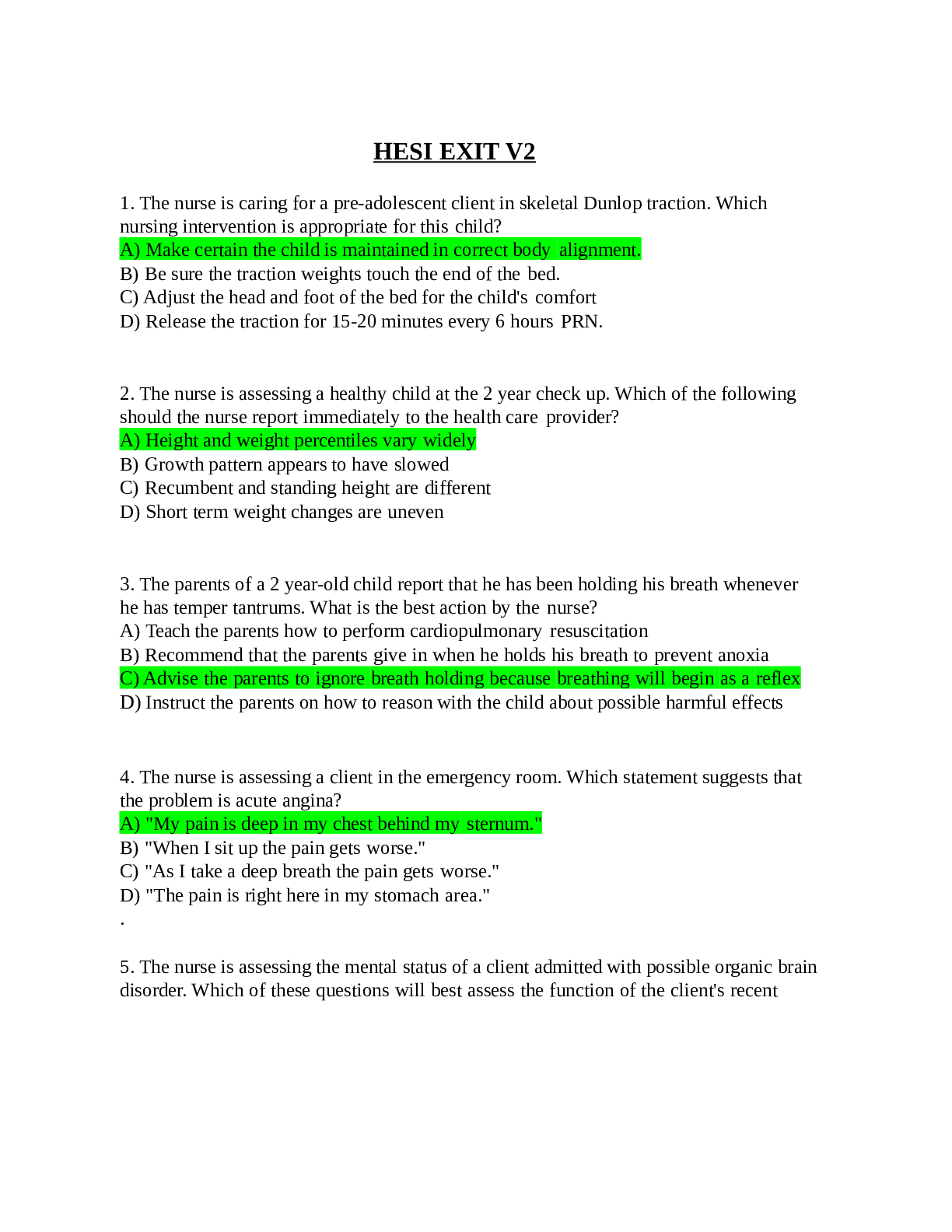
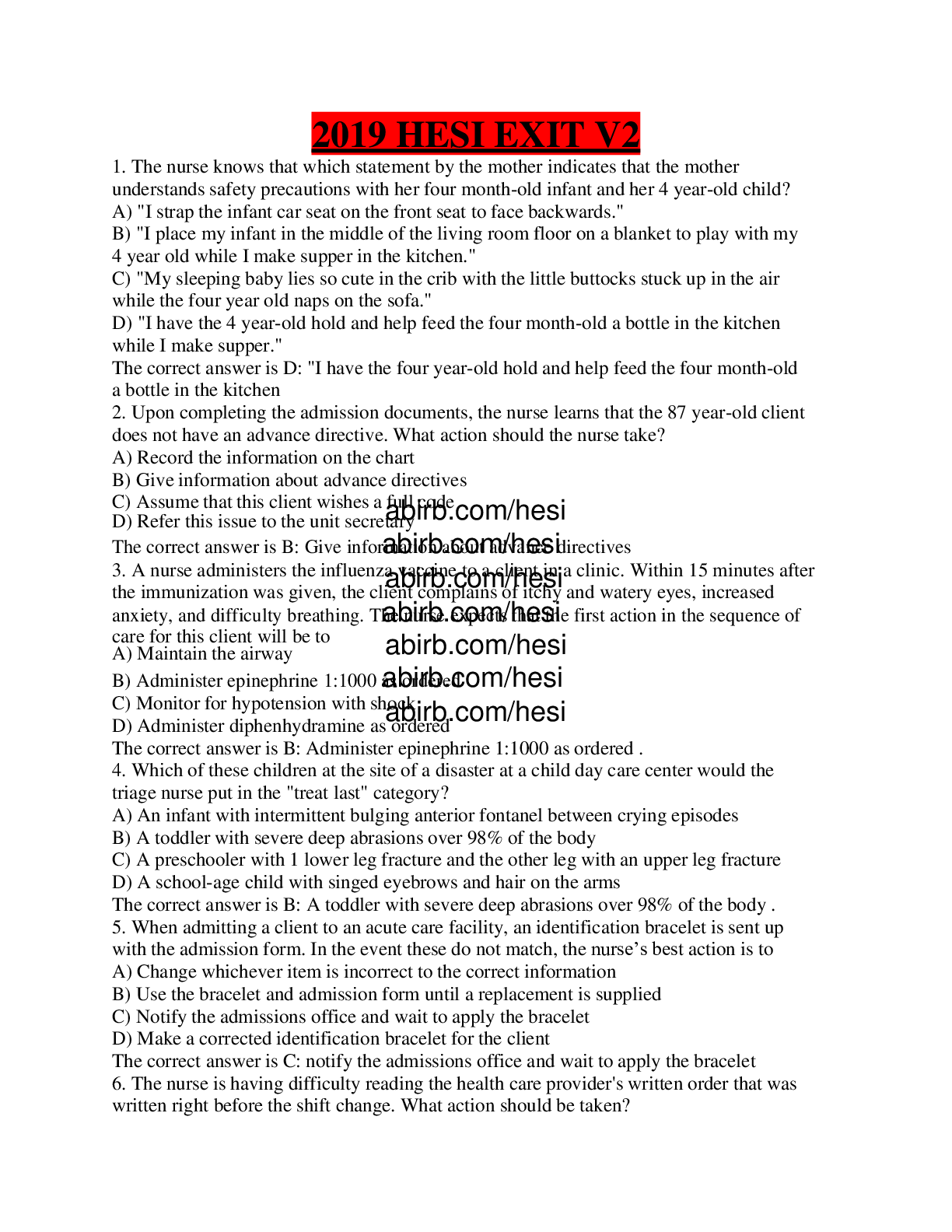
.png)
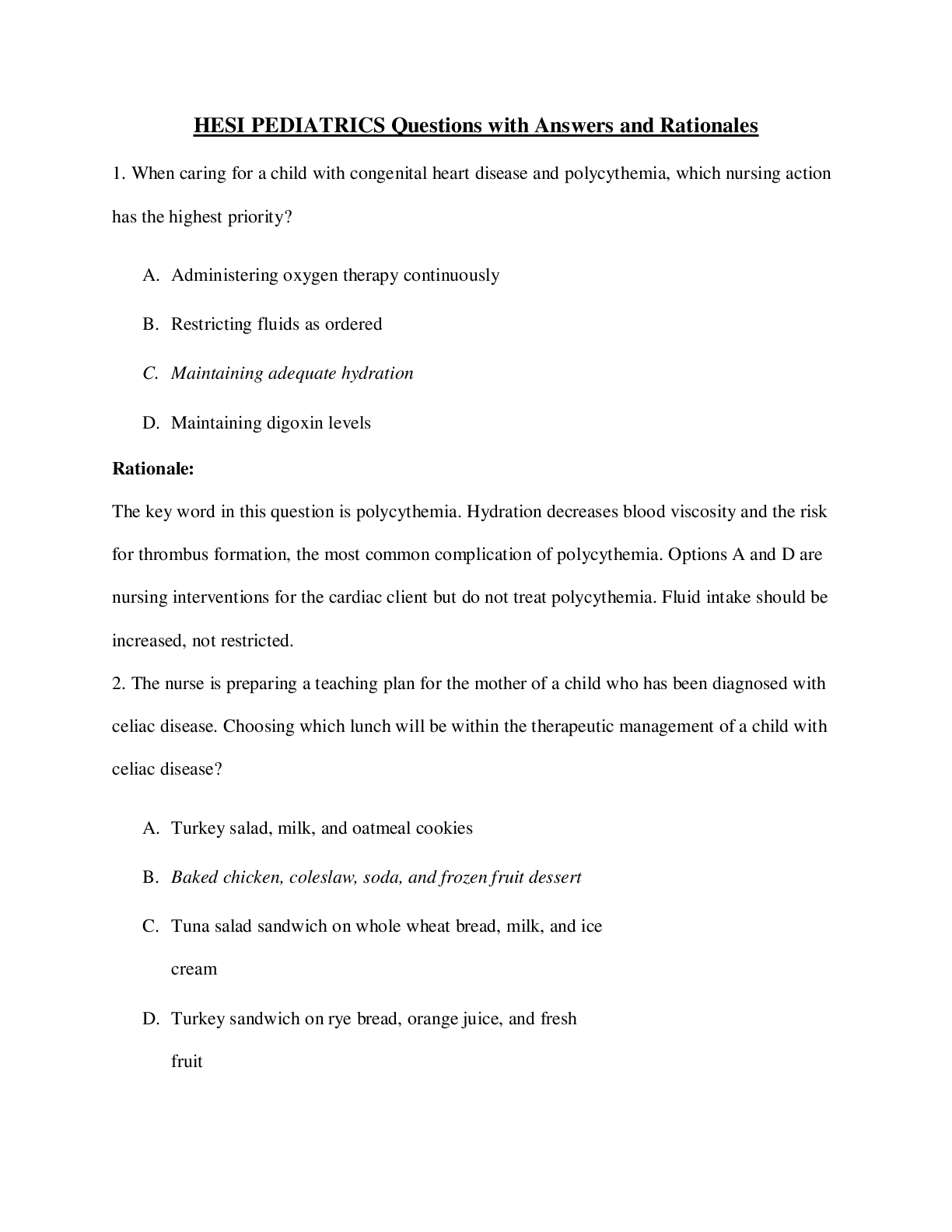
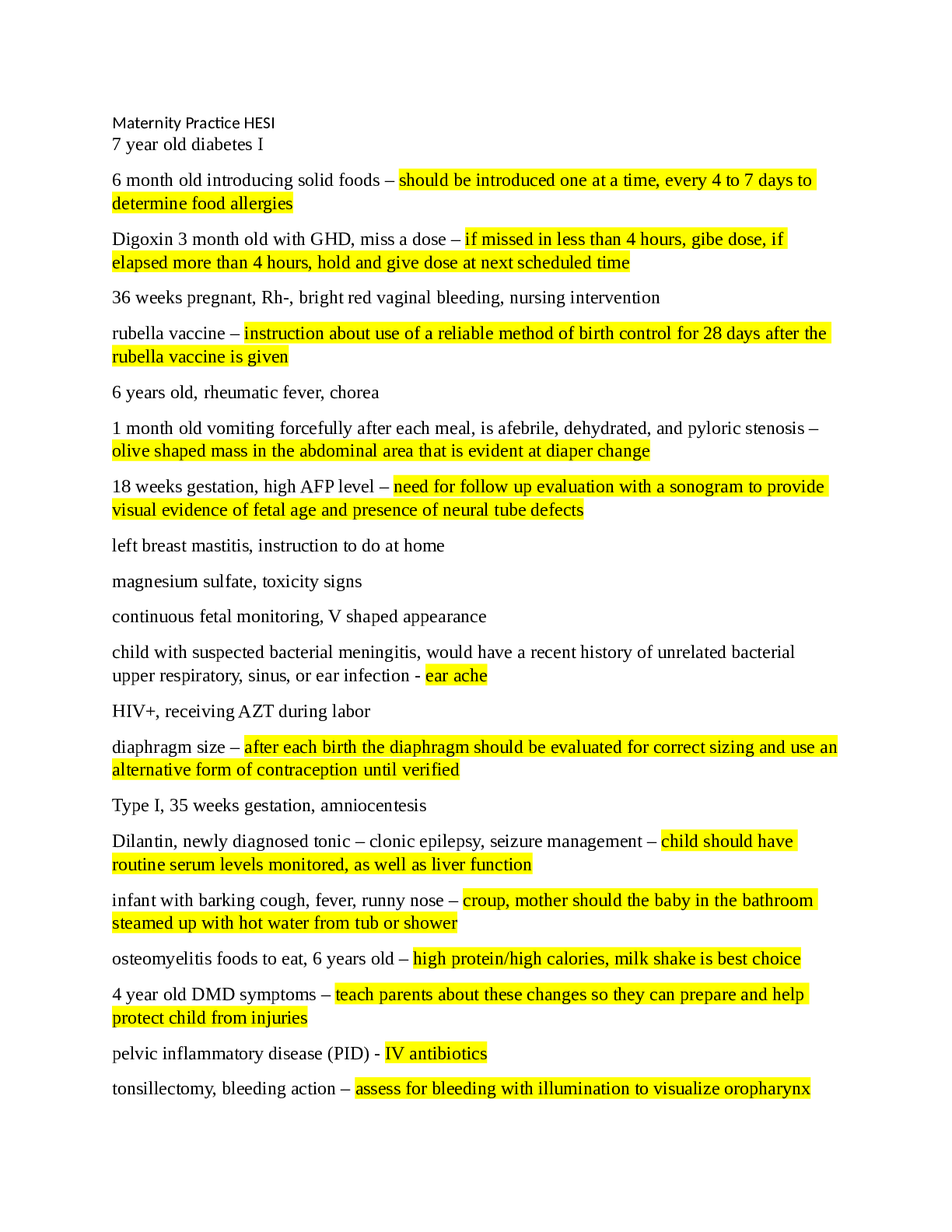
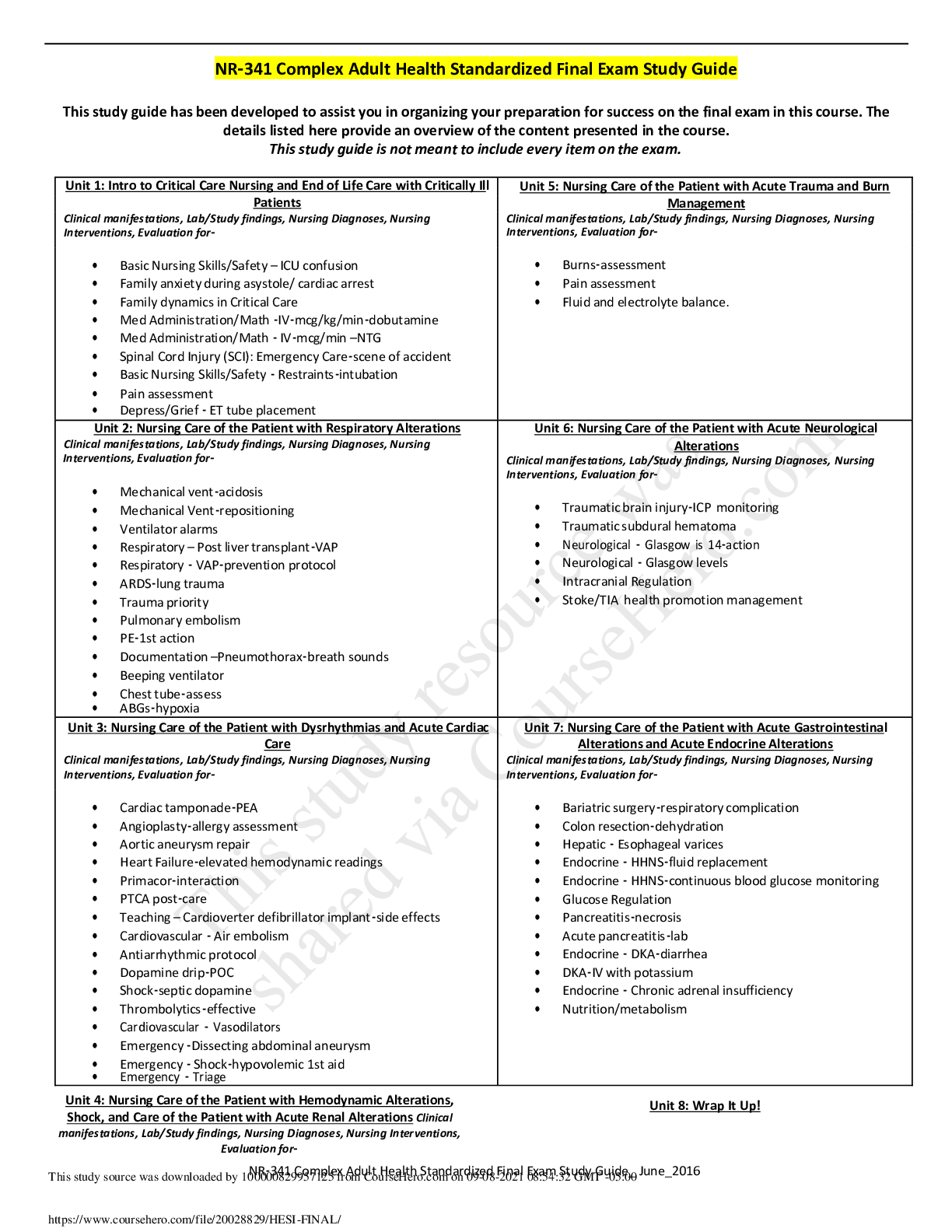
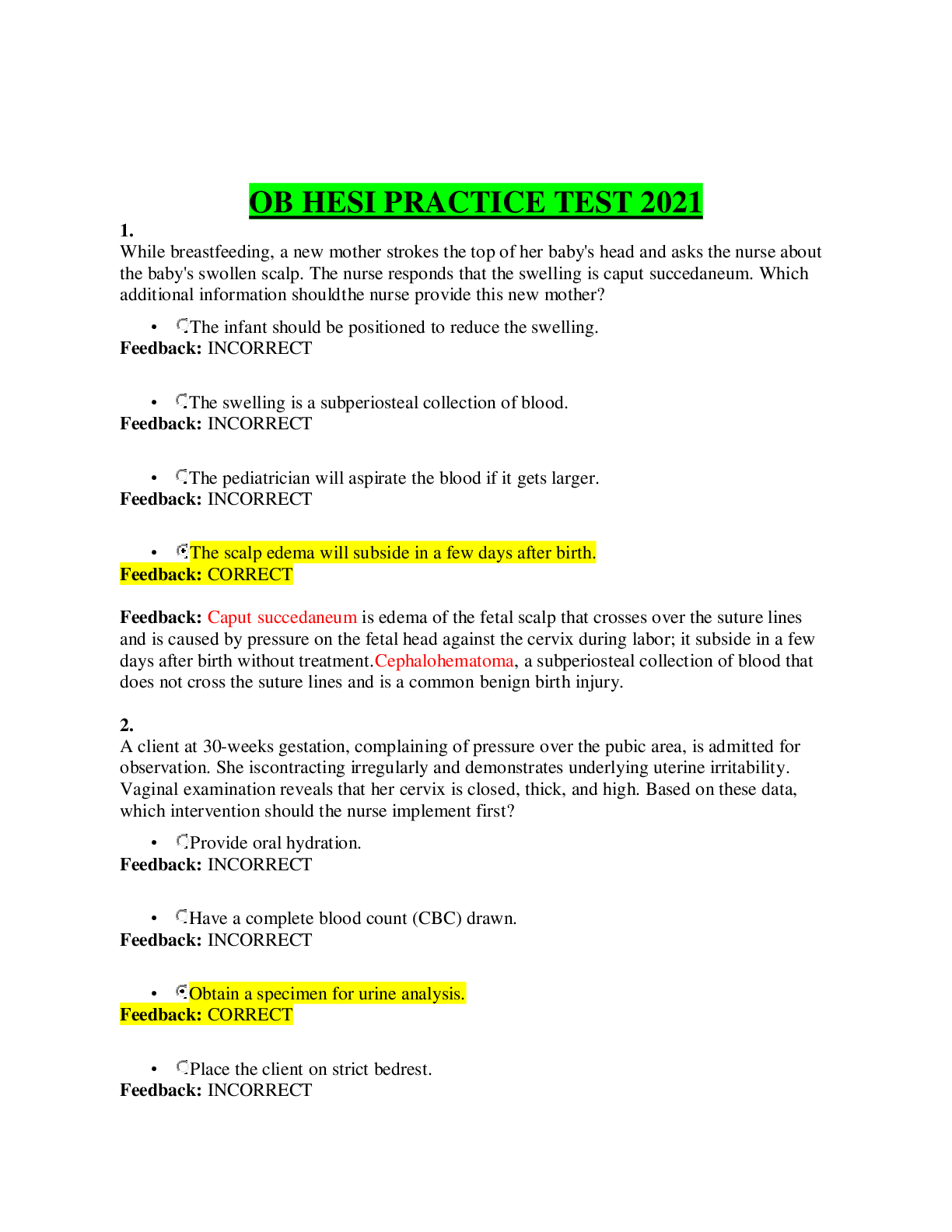
 LATEST QUESTIONS AND COMPLETE SOLUTIONS.png)

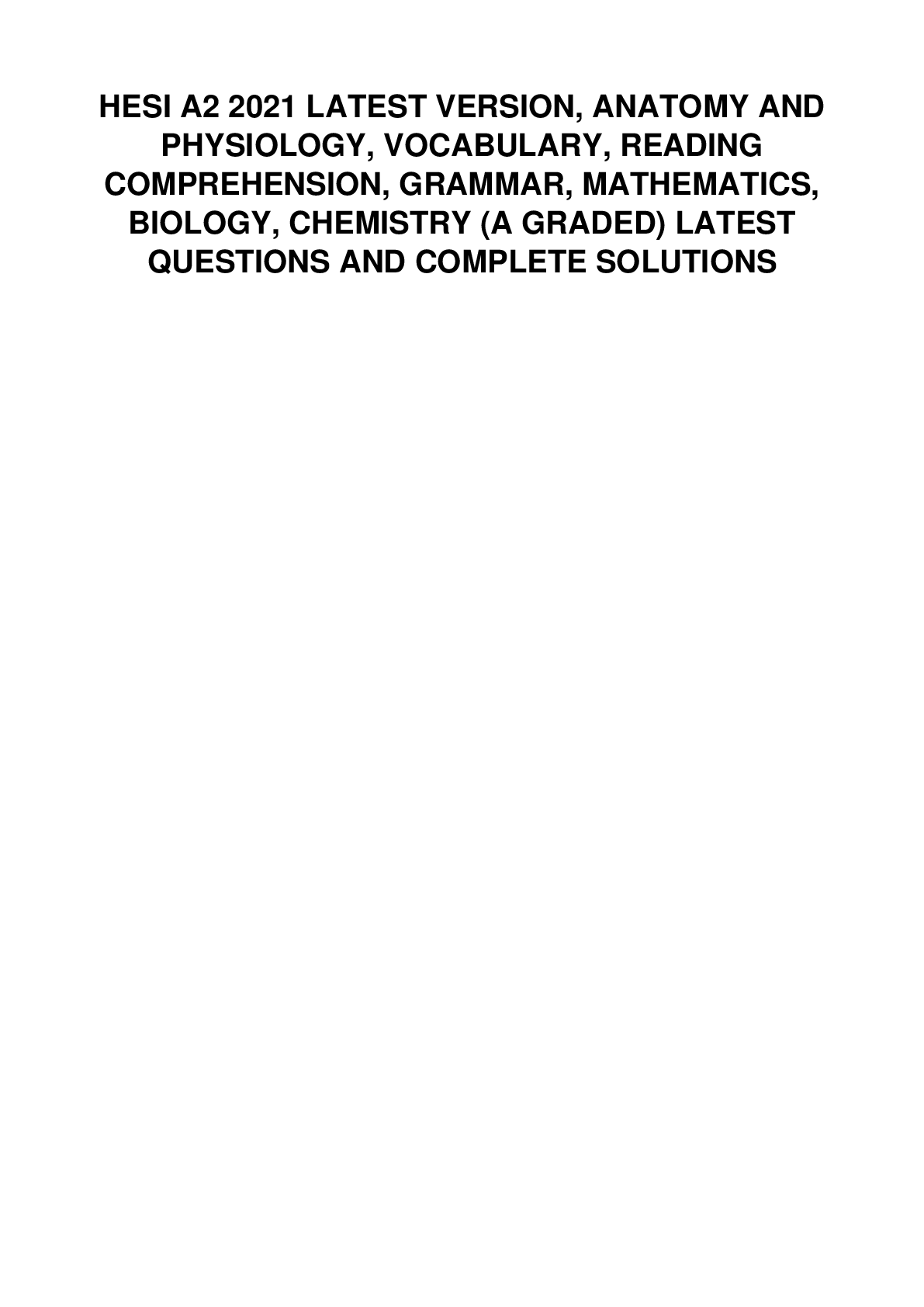
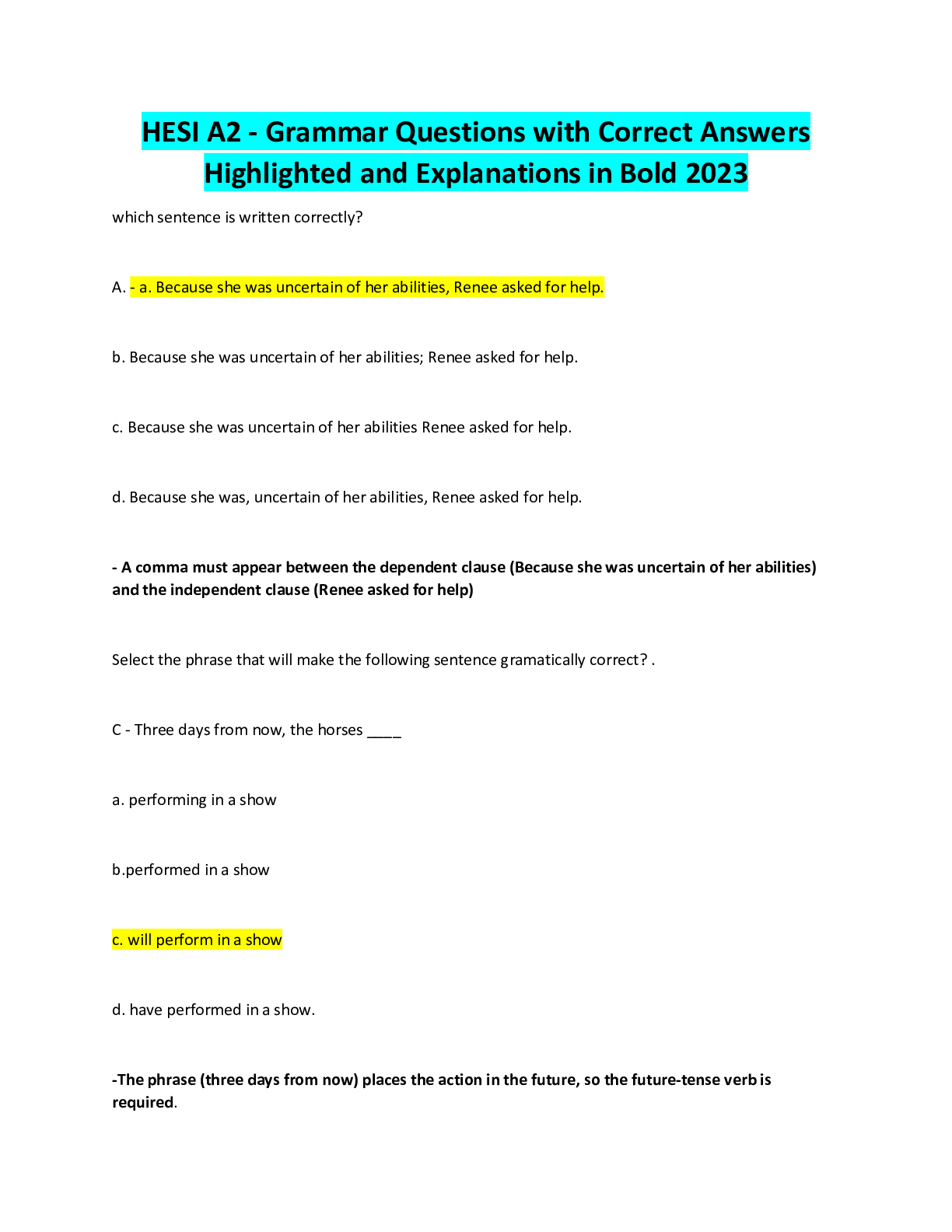
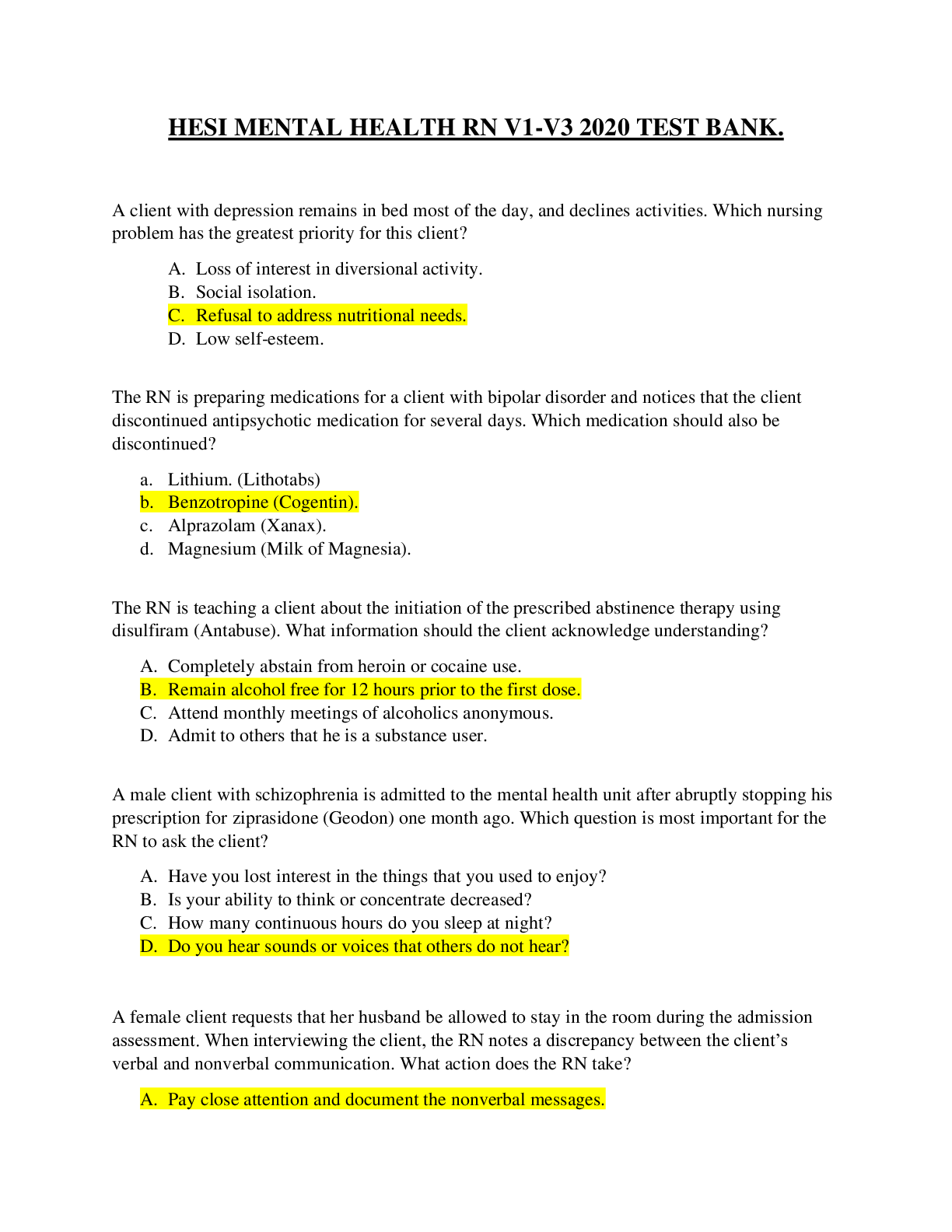
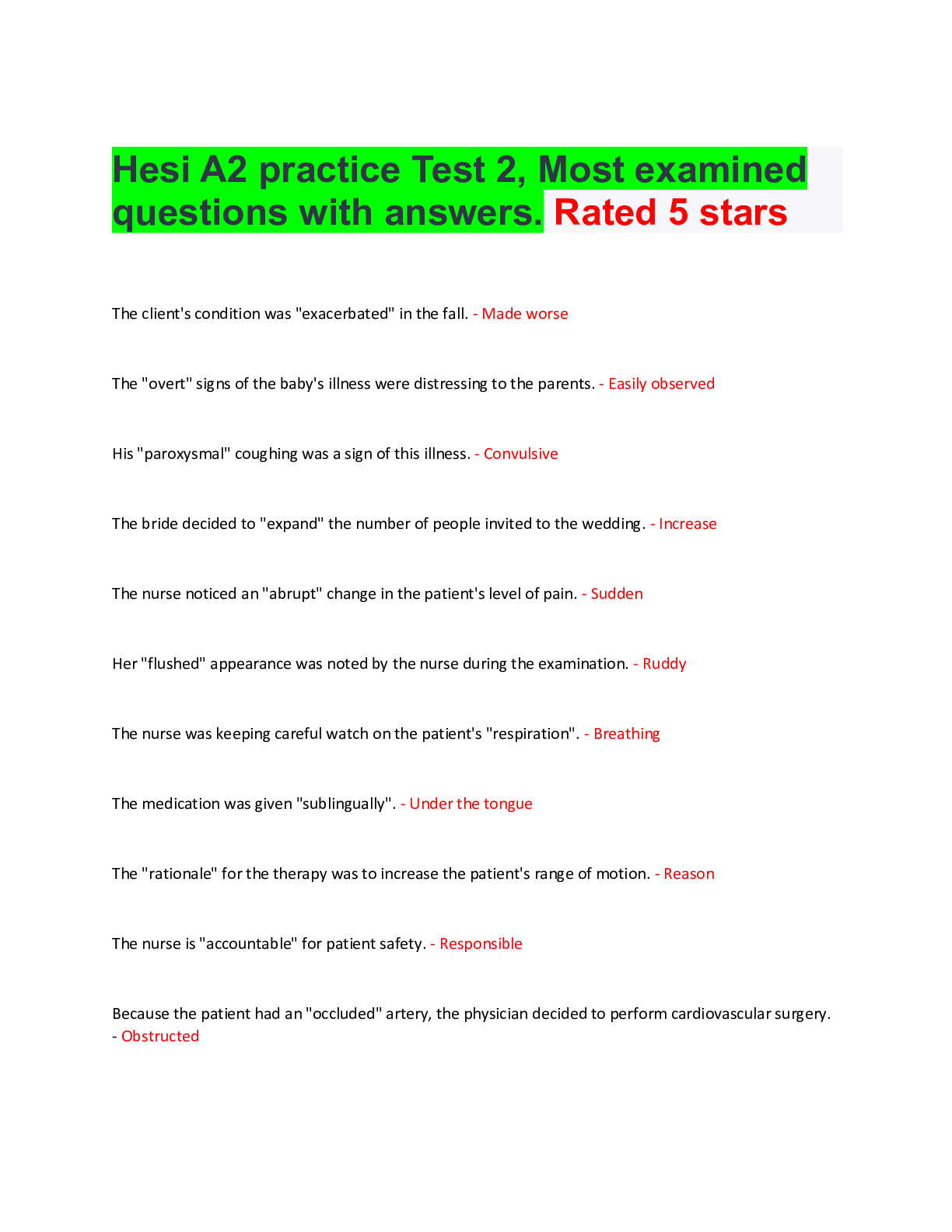
.png)
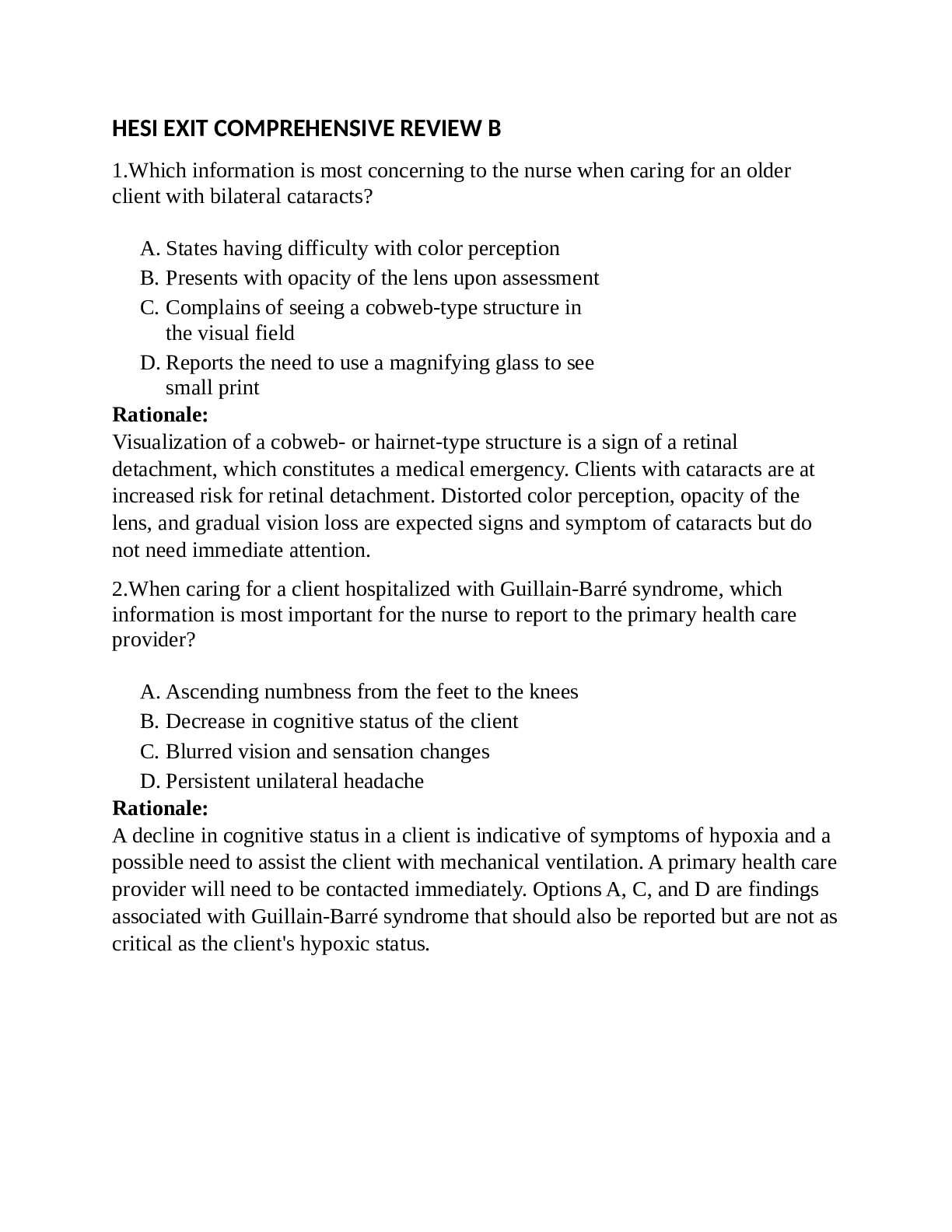
.png)
 Latest Questions and Complete Solutions.png)

